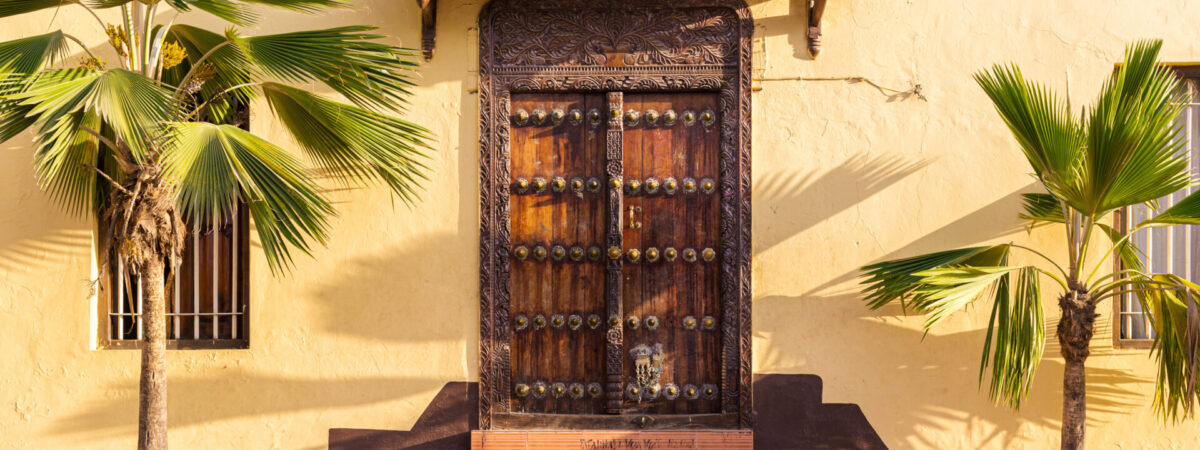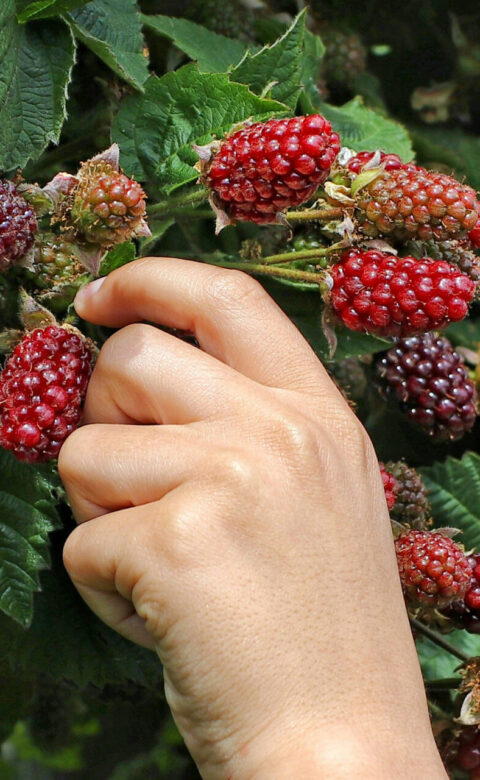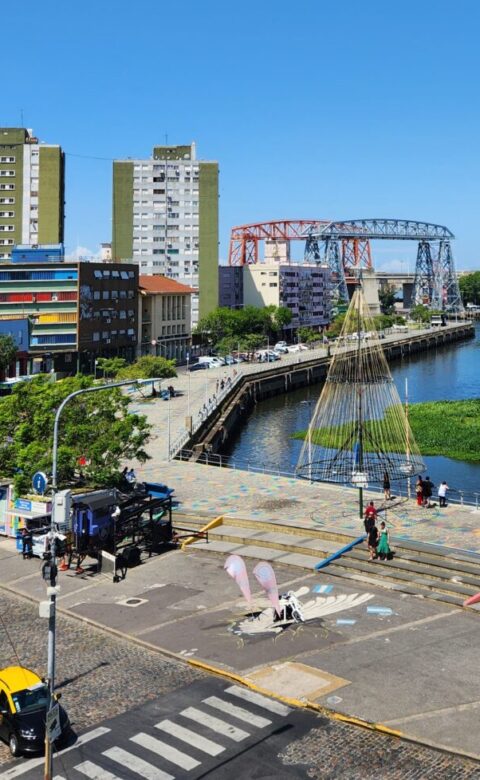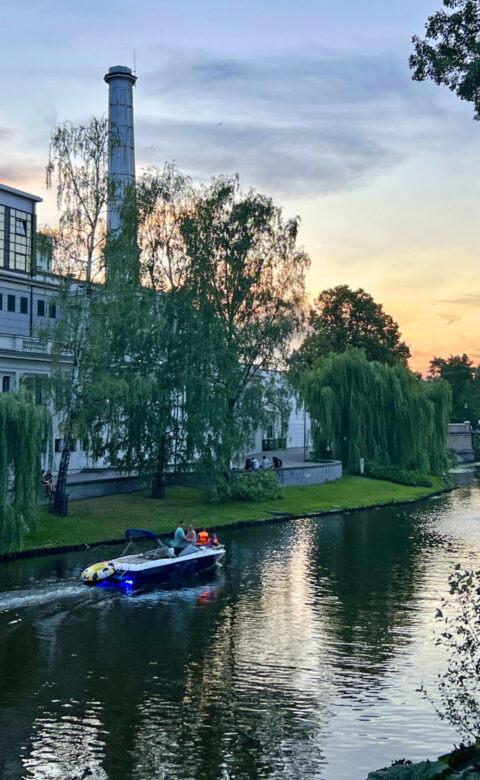Also known as Mji Mkongwe (Swahili for ‘old town’), Stone Town is the old part of Zanzibar City — the main city on the island of Zanzibar in Tanzania. This vibrant coastal destination draws travellers with its history as a former trading post, a melting-pot culture and breathtaking natural landscapes. As you wander through its labyrinth, you’ll be captivated by richly adorned architecture, savour tantalising Zanzibari cuisine, and discover pristine beaches beside crystal-clear waters. Behind the undeniable charm and beauty, you’ll find community pride and a commitment to preserving the environment.
~ This guide is a collaboration between writer Susan Onyango with Amour Suleiman Amour El-Hinawy and Noreen Cichon, local experts ~
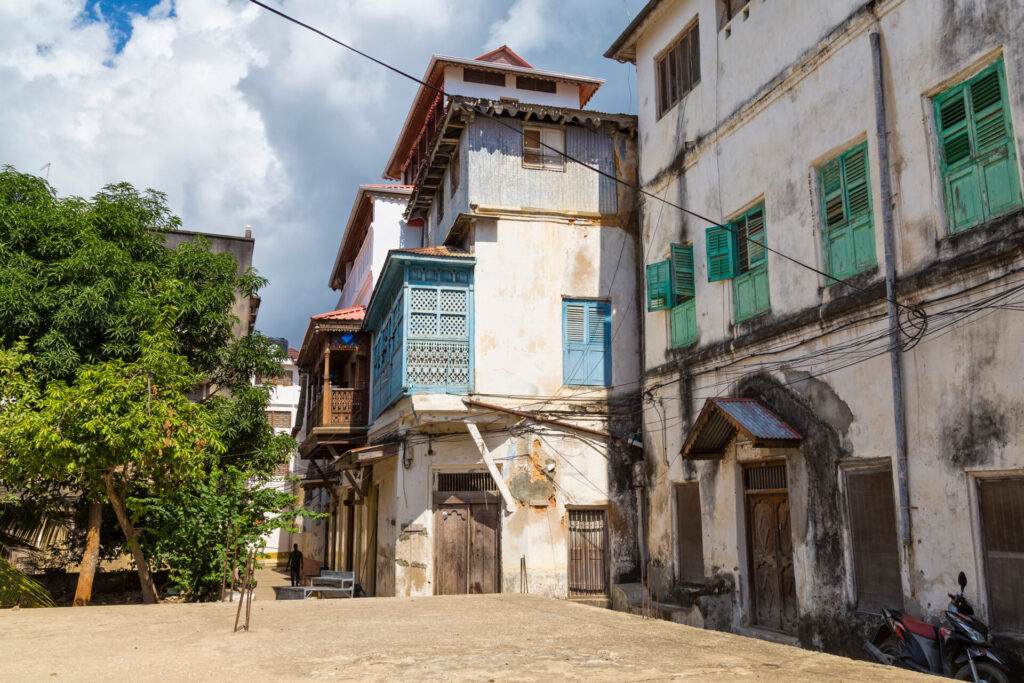
Upon Arrival
After a visitor arrives in my town, I always recommend going straight to Forodhani Gardens because it beautifully showcases the vibrant local culture and provides a perfect introduction to the town’s culinary delights.
In the evening, it transforms into a bustling night market, offering an array of delicious street food and live entertainment. You can immerse yourself in the lively atmosphere while savouring traditional Zanzibari dishes and nibbling a selection of delectable sweets.
I tell first-time travellers to take a leisurely stroll through the narrow streets of Stone Town, explore the charming alleys and admire the intricately carved doors. I also tell them to avoid street vendors who may approach aggressively and instead opt for more reputable shops and markets.
The best museum to start your journey and get a good sense of this town is the Zanzibar Museum of History and Culture with its comprehensive overview of the island’s past as a primary trading post on the silk, spice and slave routes. In an exploration of diverse heritage, you’ll find exhibits on the history of Zanzibar’s spice trade, the abolition of the slave trade, traditional Swahili culture and much more.
Parents should take their kids to Forodhani Park playground with its swings, slides and climbing frames sure to provide a fun-filled experience. It’s also a safe and enjoyable space for children to play and interact with local youngsters.
Food from the Heart
In keeping with the cultural melting pot of the area, Zanzibari cuisine is a delightful fusion of Swahili, Arab, Indian and Persian flavours. People from here know better than to rush through their meals; instead, they would rather savour each bite and engage in lively conversation with their companions.
Among the dishes my town is most proud of, our amazing seafood, grilled meats (like the skewers known as mishkaki) and the distinctively delicious Zanzibar pizza are just three of the many absolute musts. I like to go to Forodhani Night Market to really enjoy them.
When we get together to celebrate, freshly squeezed sugarcane juice, juisi ya miwa (or juisi ya mua), is what people here traditionally drink. This sweet and invigorating beverage is the perfect accompaniment to hot and sunny days on the island. I like to gather my friends and go to the local sugarcane juice stalls along Creek Road for a round.
When I eat completely local, I will go to Lukmaan Restaurant. I know the food here is authentic, reflecting the traditional flavours of Zanzibar and the best of Swahili cuisine. From mouthwatering dishes like octopus curry to aromatic rice pilau and creamy coconut-based desserts, the restaurant offers a selection of Zanzibari specialities prepared with love and care.
Another two classic, iconic restaurants include 6 Degrees South and The Silk Route. 6 Degrees South specialises in delicious seafood, blending local ingredients with international flavours; while The Silk Route’s modern Indian food takes you on a culinary journey along the historic trade routes, offering flavours inspired by Zanzibar’s spice-rich heritage.
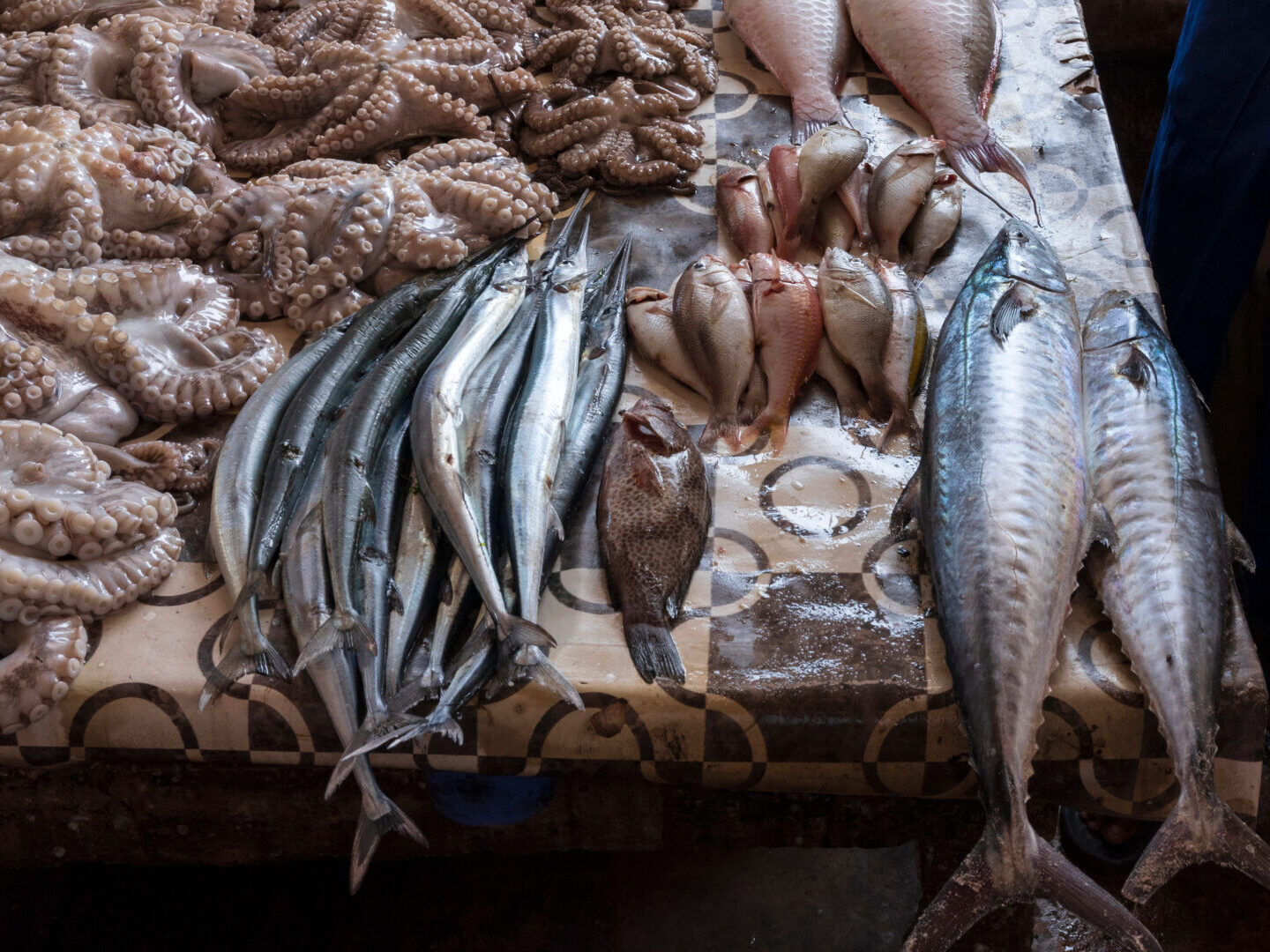

Shopping Locally
My town is known for making superlative handcrafted goods, particularly intricate wood carvings.
The best food market in Stone Town is Darajani Market. The market is a hub of activity, where locals gather to buy fresh produce, spices and traditional ingredients — a must-visit for any food enthusiast.
And the best market to buy items like handmade crafts is Mwanzo Mpya Market located near the Forodhani Gardens. This lively market includes the craftsmanship of local artisans, from wooden carvings and batik fabrics to beaded jewellery and traditional musical instruments.
To buy real, local souvenirs, I always take visitors to the Zanzibar Curio Shop. The products are carefully curated to represent the artistry and heritage of Zanzibar and the vibe is welcoming, ensuring a pleasant shopping experience.
And we know to avoid street vendors selling counterfeit goods, because they often deceive tourists with fake replicas that lack the authenticity and quality of genuine Zanzibari craftsmanship.
Getting Deeper Into Stone Town
A great book to learn more about my town is Zanzibar: A Cultural History by Abdul Sheriff, a Tanzanian emeritus professor of history, member of the Zanzibar Stone Town Advisory Board and former director of the Peace Memorial Museum (Beit el Amani).
Many people know about Stone Town being the birthplace of Freddie Mercury — originally Farrokh Bulsara — lead singer of British band Queen (he has a museum dedicated to him here); but it is also notable for natural beauties like peaceful and picturesque Nungwi Beach with its stunning white sand, crystal-clear turquoise waters and vibrant marine life.
My town is a place people are attracted to because of its enchanting labyrinthine streets, historical architecture and the warm hospitality of its residents.
To really celebrate my town at its best, come during the Zanzibar International Film Festival (ZIFF) because it showcases the best of African and international cinema. It features film screenings, workshops, live performances and cultural exhibitions.
Most people think of my town as a place to explore historical sites and indulge in beach activities, but really this is a destination to get lost in the local culture and interact with the friendly residents.
This is one of the best places in the world to experience the magic of the spice trade. Locals are proud of that because Zanzibar has been a major hub of the spice trade for centuries, earning it the nickname ‘Spice Island’. Visitors can hit the spice plantations on the outskirts of Stone Town for a tour to learn about the local cultivation and processing of spices like cloves, nutmeg, cinnamon and black pepper.

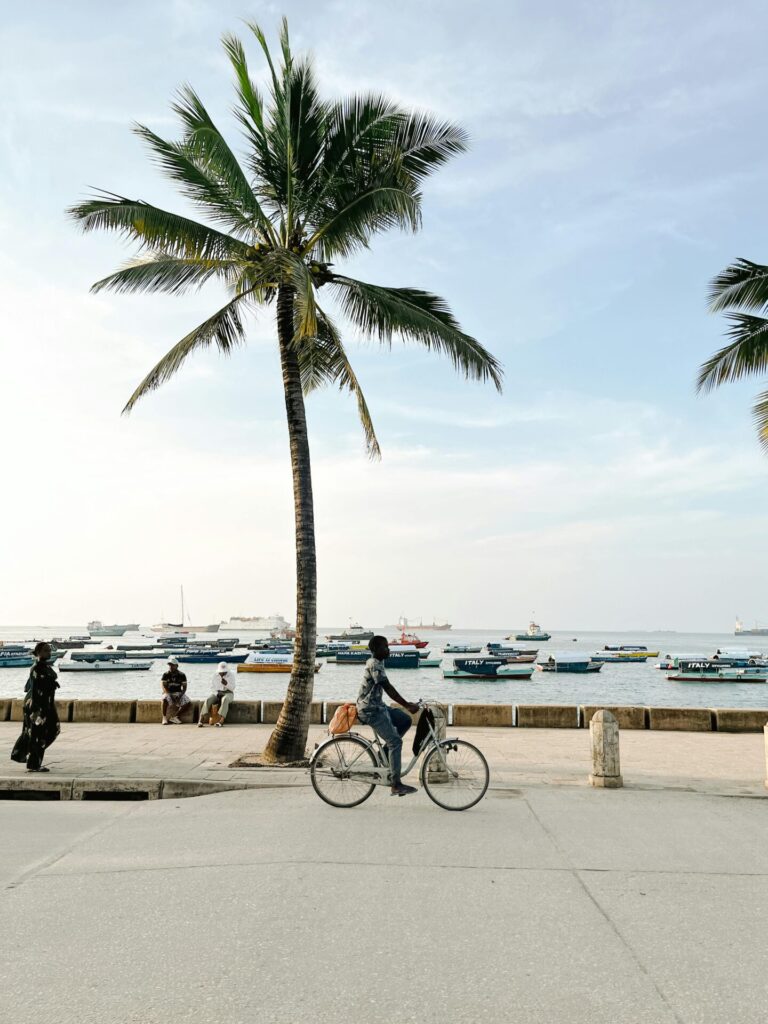
Getting Around Stone Town
One thing you should know about getting around my town is that walking is the best way to truly experience the narrow streets and alleyways, take in the historic architecture and appreciate the vibrant atmosphere.
The best way to travel in my town to have as little impact as possible is through walking or cycling.
Luckily these methods of transportation also allow me to become immersed in the Swahili culture, interact with residents more closely and discover hidden gems at my own pace.
Outside The Town
To get away and into the outdoors, I like to venture to Prison Island, also known as Changuu Island. In this idyllic locale, visitors can relax on the sandy shores, snorkel alongside colourful marine life, and even meet the giant Aldabra tortoises that roam freely on the island.
For a day trip just beyond my town, I like to visit Jozani Forest, home to the endangered Zanzibar red colobus monkeys which are endemic to the island.
Many people will head to popular beaches like Nungwi or Kendwa, but locals know to go to Paje Beach which offers a more relaxed and laid-back atmosphere compared to the busy tourist beaches; it’s also is a hotspot for kitesurfing and windsurfing enthusiasts.
I really enjoy the view of my town from the Forodhani Gardens. Situated along the waterfront, the gardens provide a stunning panorama of Stone Town’s historic buildings, the Indian Ocean, and the activities at the nearby Forodhani Night Market. It’s the perfect place to relax, take in the beauty of the area and witness the vibrant energy that defines Stone Town.


Connecting with Locals
When I want to have fun and celebrate being out in my town, I join the locals in a game of bao. It’s a traditional board game widely played in Zanzibar and throughout East Africa and you can find locals gathered in small groups playing bao in public spaces or at cafés. Joining in on a game not only provides entertainment but also an opportunity to connect with the community, learn about local traditions and forge new friendships.
To hang out with my friends and go to a real insider spot, I go to the rooftop terrace of the Emerson Spice Hotel where I enjoy breathtaking views of the skyline while sipping on refreshing cocktails and indulging in delicious food.
The best resource for finding out what’s going on around town and keeping on top of events and happenings is Zanzibar Events.
When I want to enjoy my town without spending much (or any) money, I explore the historic sites and landmarks that showcase the rich history and cultural heritage of Stone Town. From the House of Wonders (or Beit el Ajaib) and the Old Fort to the Sultan’s Palace Museum and the narrow winding streets, there are countless opportunities to uncover the fascinating stories and architectural marvels that make this destination so special for travellers.
The local live music scene encapsulates the soul of Zanzibar. Many bars and restaurants in Stone Town feature live music performances, showcasing talented local musicians and bands playing traditional Swahili music, taarab and other genres with a Zanzibari twist. And when I feel like dancing, I go to Monsoon Restaurant and Bar for the mix of music styles including Afrobeat, reggae and modern hits.
Finding Solitude in Stone Town
When I want to go somewhere to sit and relax in my incredible town, I go to the Forodhani Gardens. With its shaded benches, swaying palm trees and views of the Indian Ocean, it’s the perfect spot to unwind, read a book, or simply sit back and soak up the beautiful atmosphere.
The place that makes me proudest of my town is the Cultural Arts Centre Zanzibar because this institution is dedicated to preserving and promoting the rich cultural heritage of Zanzibar. It serves as a hub for artists, musicians, dancers and artisans to showcase their talents and share their traditions with the community and visitors.
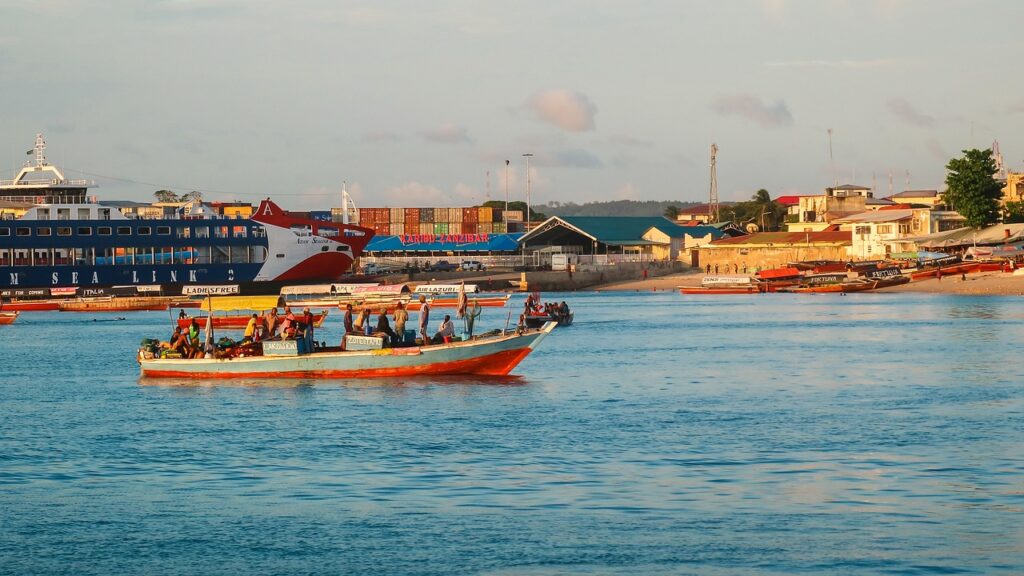
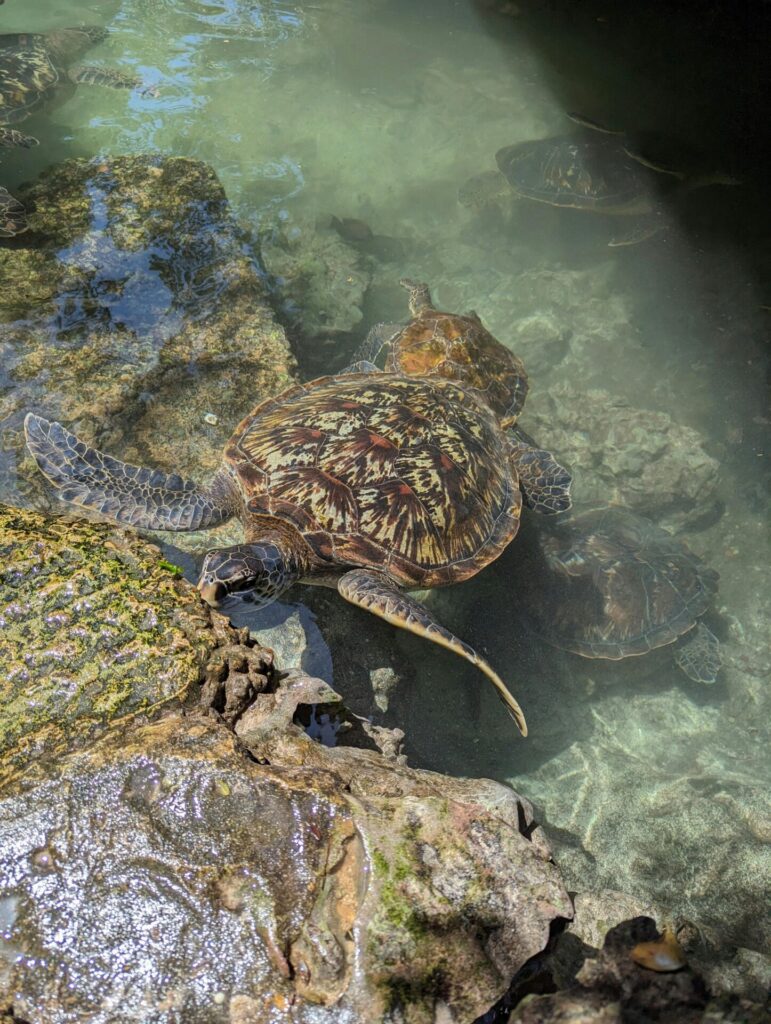
When the Seasons Change, This Town Shines
Dry season (June to August) is the best time to explore the rich marine life and vibrant coral reefs in locations like Mnemba Atoll, Leven Bank, or the Menai Bay Conservation Area. Encounter colourful fish, sea turtles, dolphins and maybe even whale sharks.
I always recommend that visitors come to Stone Town during the dry season; the weather is comfortable, making it perfect for exploring the narrow streets and checking out historical sites. With sunny days and cooler temperatures, it’s also a great time to embark on spice tours and visit the plantations that the island is renowned for.
The semi-dry season (September to November), here is magical when you can witness the annual dhow sailing regatta. During this time, local fishermen and sailors come together to showcase their skills and compete in traditional sailing races. The sight of these elegant wooden boats with their billowing sails against the backdrop of the endless blue horizon or a fiery sunset is truly captivating.
The wet season (November to May) is a great time to explore some of the other wonderful museums here. Visitors can investigate a variety of treasure troves from the Princess Salme Museum to the Old Dispensary to the Hamamni Persian Baths, to name just a few of several fascinating options.

